Religion: Bible

Abigail: Bible
Abigail, the intelligent and beautiful wife of the wealthy but boorish Nabal, intervenes to prevent David from committing a bloodbath and eventually becomes one of David’s wives (1 Samuel 25). She prophesies that David will establish a dynasty, but neither she nor her son play a role in future struggles over rule or succession.

Abishag: Bible
Abishag is an unspeaking Bible character involved in the story of the power struggle between King David’s sons. She is used as a tool to move along the plot concerning Solomon and Adonijah; her story conveys the importance of male honor, as Solomon asserts his right to determine the sexual fates of the female members of his household.
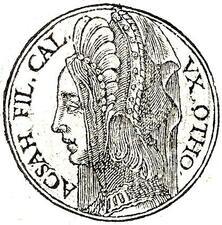
Achsah: Bible
Achsah is the daughter of Caleb. She succeeds in gaining some of her family’s land and water resources, which were normally not available to women in ancient Israel’s patrilineal system. Nevertheless, she remains vulnerable within the patriarchal system.

Achsah: Midrash and Aggadah
The daughter of Caleb, Achsah is depicted in rabbinic tradition as both beautiful and practical.
Adah 1: Bible
The Hebrew Bible character Adah appears in Genesis and is one of the two wives of Lamech. Her sons are in the seventh generation of naturally born human beings, and they are the founders of the civilized arts.
Adah 2: Bible
The Hebrew Bible character Adah appears in Genesis 36 and is the daughter of Elon the Hittite and the wife of Esau. Her character demonstrates the importance of women and marriage in understanding kinship groups in the Book of Genesis.
Ahinoam: Bible
Ahinoam is a Hebrew Bible character appearing in the Book of Samuel as King David’s wife and mother of his eldest son, Amnom. Since Ahinoam’s name usually precedes the name of David’s other wife Abigail, it is suggested that the name order signifies Ahinoam’s elevated status as the mother of David’s firstborn son.

Anda Pinkerfeld Amir
Anda Pinkerfeld-Amir was a Zionist poet, and author whose works reflected the tension between Judaism and feminism in the early twentieth century. In her youth, she was a member of Ha-Shomer ha-Za'ir in Poland, and in 1920 she immigrated to Palestine to write Hebrew verse. She is best remembered as a children’s writer who tackled complex topics with humor and compassion.

Anath: Bible
Anath (Anat), a maiden/warrior goddess, is a prominent figure in the Canaanite mythological texts. Despite her prominence in the Ugaritic texts, she rarely appears in the Hebrew Bible. However, the naming structure used in references to Anath in the Bible indicates that she may have been honored among some Israelites.
Art: Representation of Biblical Women
For centuries, art has portrayed biblical women in ways that reflect society’s attitudes towards women and their role. Depictions of female biblical figures fluctuate according to historical and social perceptions. Jewish art often features heroic and worthy women who, through their courageous deeds, helped to triumph over Israel’s enemies.
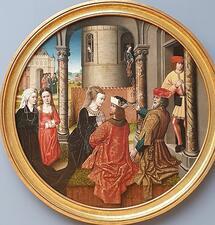
Asenath: Bible
The minor character Asenath, mentioned in the Bible as Joseph’s wife and mother of Manasseh and Ephraim, became the heroine of an ancient Jewish novel written between 100 BCE to 200 CE, likely in Egypt. In the text, the daughter of an Egyptian priest falls in love with Joseph, turns to the God of Israel, marries Joseph, and is saved by God and some of Joseph’s brothers from attack by Pharaoh’s son.

Asenath: Midrash and Aggadah
Asenath is mentioned in the Torah as “the daughter of Poti-phera,” an Egyptian priest. Whether she actually descended from the Egyptians or Israelites is a contested matter in the Rabbinic tradition.
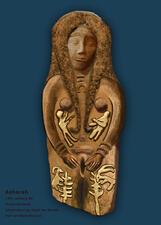
Asherah/Asherim: Bible

Astarte: Bible
Astarte is the Greek form of the name Ashtart, who, along with Asherah and Anath, was one of the three great goddesses of the Canaanite pantheon. Astarte is well known as a goddess of sexual love and fertility but also has associations with war.
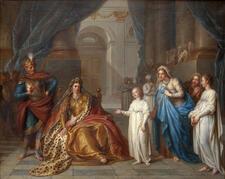
Athaliah: Bible
Queen Athaliah lived in the ninth century B.C.E. and was the wife of Jehoram of Judah. After her son’s brief rule, she kills the remaining members of the dynasty and reigns for six years, when she is overthrown. She is viewed negatively in scripture, which describes her actions as wicked, and her ability to harness power is not mentioned.
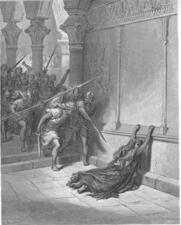
Athaliah: Midrash and Aggadah
Athaliah was one of the few women to rule Israel, which she did for six years. She was very powerful and is described as evil, as she radically changed traditional practices and executed almost all of the members of the Davidic lineage.
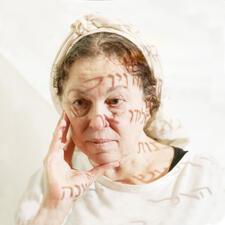
Helène Aylon
Helene Aylon was an American, New York-based, multimedia visual artist who began by creating process art in the 1970s, focused on anti-nuclear and eco-activist art by the 1980s, and subsequently devoted more than 35 years to the multi-partite installation The G-d Project. This last body of work’s often direct or indirect textuality resonates from and responds to Judaism’s traditionally male-dominated textuality as part of a larger commentary on women in Judaism.

Barren Women in the Bible
The Hebrew Bible tells six stories of barren women: three of the four matriarchs (Sarah, Rebekah, and Rachel); the unnamed wife of Manoah/mother of Samson; Hannah, the mother of the prophet Samuel; and the Shunnamite woman, an acolyte of the prophet Elisha. Each woman suffers a period of infertility, in some cases exacerbated by the presence of a fertile, though less beloved, rival wife. Eventually, God intervenes and the woman conceives, but the beloved son is then dedicated back to God, either in service or in sacrifice.
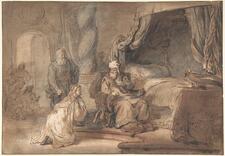
Bathsheba: Bible
Bathsheba is the married woman whom King David takes in adultery and who, though initially passive, becomes the pivotal figure in his downfall. The king has Bathsheba’s husband, Uriah, slain in battle and then takes her as a wife. While her first child, conceived in adultery, dies, the second, Solomon, becomes heir to the throne as a consequence of Bathsheba’s maneuverings.

Bathsheba: Midrash and Aggadah
As in the Bible, Bathsheba plays a secondary role in the midrashim about her husband, King David, and her son, King Solomon. The rabbis view her as a righteous, guiltless woman, both during David’s life and as an advisor to Solomon.
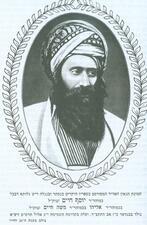
Ben Ish Hai
The Ben Ish-Hai, R. Joseph Hayyim b. Elijah, was a well-known Baghdadi Torah scholar. He wrote many responsa and halakhic books, which included his rulings on women’s halakhot.
Rayna Batya Berlin
Rayna Batya Berlin was a Lithuanian woman committed to religious study who argued that women should be able to study the Torah and the Talmud. The only source of her life was written by her nephew, who describes her frustration with her subjugated status in her community and how she generally suffered in silence.
Biblical Women in World and Hebrew Literature
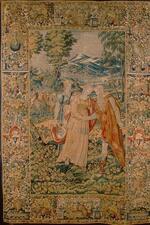
Bilhah: Bible
Bilhah is given to Rachel as a maid and would later serve as a surrogate mother for Rachel when she could not conceive. Though the story records none of Bilhah’s thoughts or words, she gives birth to two of Jacob’s sons for Rachel, Dan and Naphtali, and is remembered as one of the ancestresses of the Israelites.

Bilhah: Midrash and Aggadah
Bilhah was the maidservant of Rachel and mother of Dan and Naphtali. The rabbis fill in details about her life, her relationship with Jacob, and the confusing incident between Bilhah and Reuben, Jacob’s eldest son.


